Comet Tsuchinshan-ATLAS (C/2023 A3),
Moon on Dome
Posted: 16 October 2024
|
Open: Tuesday, 15 October 2024, 1806 MST Temperature: 74°F |
Session: 2019 Conditions: Clear |
Equipment:
12" f/8 LX600 w/StarLock
2" 24mm UWA eyepiece
Focal reducer
12x50 binoculars
2" 30mm eyepiece
Camera:
iPhone 15 Pro Max
D850 DSLR
1811 MST: LX600 ON, StarLock OFF, High Precision OFF.
Viewed Venus, 102X.
Viewed Comet Tsuchinshan-ATLAS (C/2023 A3), 102X. The coma was visible in the bright twilight sky.
I then prepared the D850 DSLR for imaging the comet.
1819 MST: I took this handheld afocal 102X image of the comet using the iPhone 15 Pro Max. I used the NightCap Camera app (ISO 2000, 1/15sec, 1X lens) as the Apple Camera app would not focus using its autofocus (which I have complained about to Apple many times).
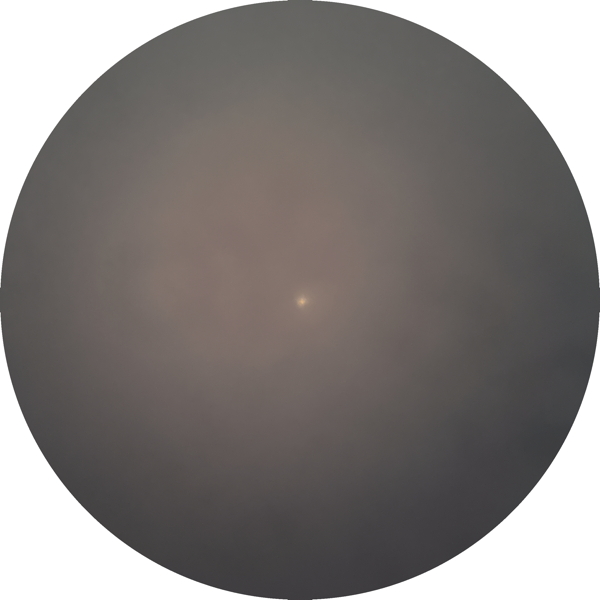
I mounted the D850 DSLR at prime focus + focal reducer, focused on the star Altair, locked the 12" primary mirror, and slewed back to the comet. I took several images of Comet Tsuchinshan-ATLAS (C/2023 A3) over the next 30 minutes as the twilight sky darkened.
1831 MST: Spotted the comet in the sky using 12x50 binoculars. The tail was visible in the twilight sky.
1833 MST: The comet was now naked eye visible in the twilight sky. The tail was faintly seen.
1850 MST: Comet Tsuchinshan-ATLAS (C/2023 A3), prime focus + focal reducer, 15 seconds, ISO 2000. The comet's anti-tail is faintly visible extending to the right of the coma. Compare this photo to telescopic images of the comet earlier this year in my Comet Astrophotography Album.
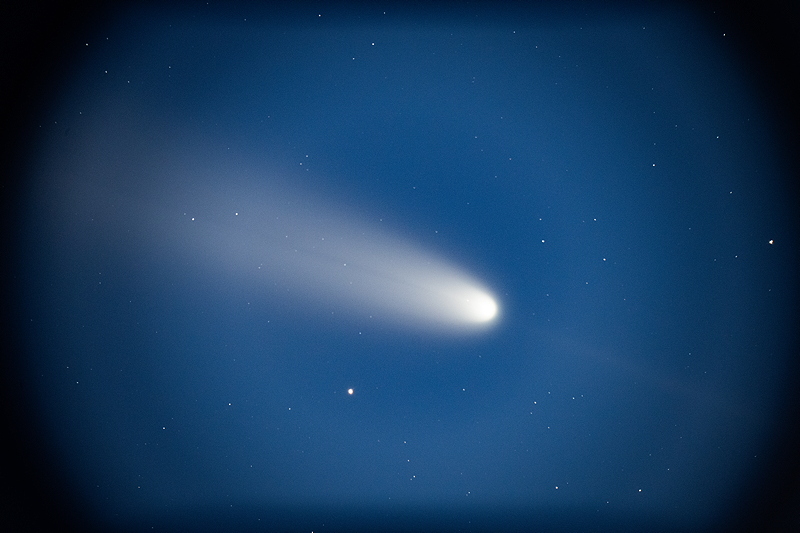
I removed the DSLR from the telescope and viewed the comet, 102X. The anti-tail was faintly visible.
1859 MST: I left the observatory and moved to a higher location where I had a good view of the western horizon.
1903 MST: Took this iPhone photo of the western sky using the Camera app (Night Mode, 10 seconds, 2X lens). The comet anti-tail is faintly visible. The planet Venus is the bright object at the lower left.
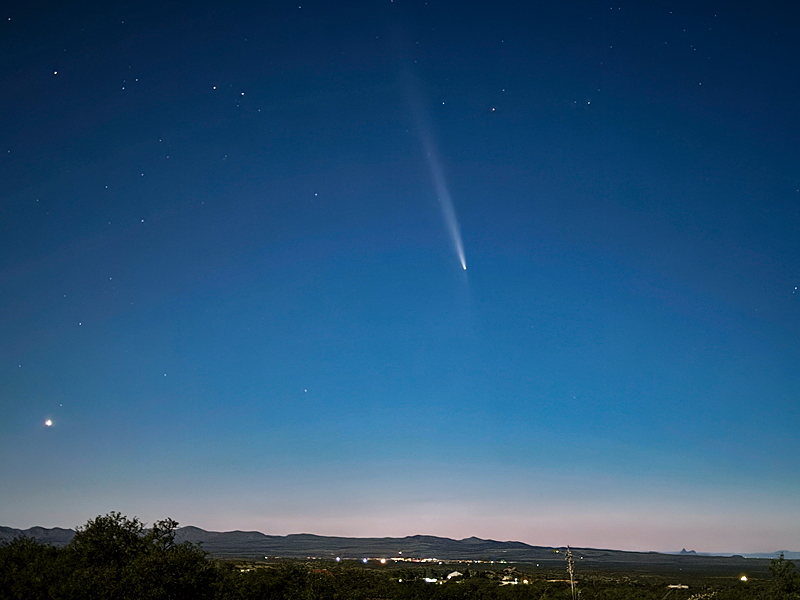
1907 MST: To the naked eye, the comet's tail was 15° long. It was unfortunate that the nearly Full Moon was making the sky so bright.
1915 MST: D850 DSLR photo (f/1.8, 2 seconds, ISO 800, FL 50mm) of the comet in the bright moonlit sky. The anti-tail is faintly visible.
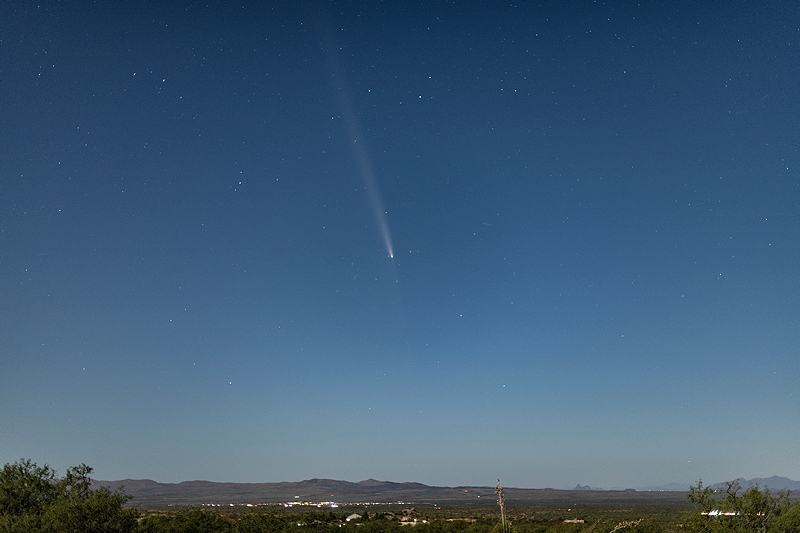
1919 MST: I took this unique iPhone photo (Night Mode, 10 seconds, 1X lens) of Comet Tsuchinshan-ATLAS (C/2023 A3) at the left and the nearly Full Moon projected onto the Cassiopeia Observatory dome.
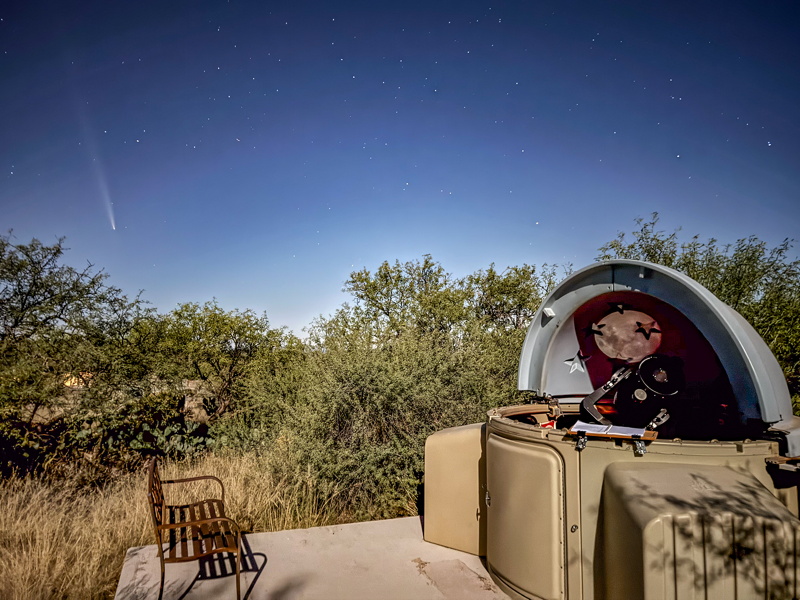
Click or tap on image for larger version
1925 MST: The comet was becoming difficult to see with the naked eye due to the bright moonlit sky as the comet moved lower in the western sky.
1930 MST: Took my final image of Comet Tsuchinshan-ATLAS (C/2023 A3) this night using the D850 DSLR (f/1.8, 5 seconds, ISO 2000, FL 50mm). The comet's anti-tail is visible. As easily seen in the larger photo, it was photobombed by 9 satellites in Low Earth Orbit and demonstrates that our night sky is being ruined by way too many satellites.
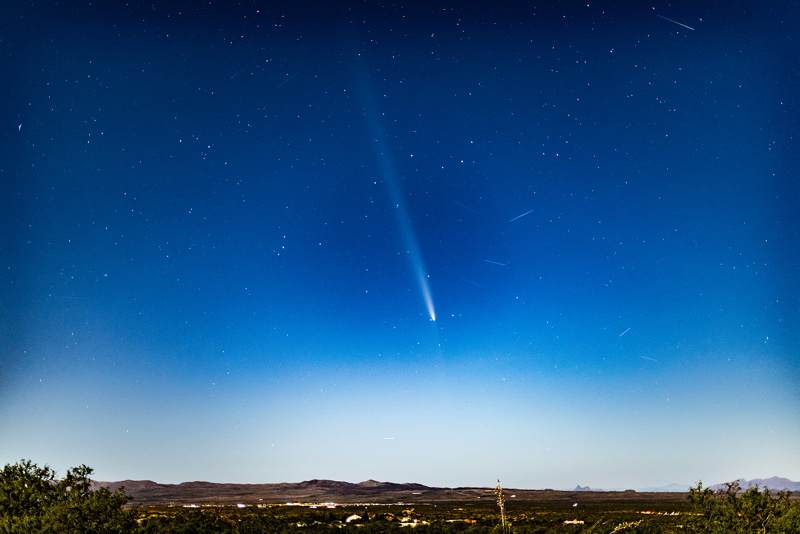
Click or tap on image for larger version
1934 MST: I returned to the observatory.
I viewed the waxing gibbous Moon, 102X and 81X.
1944 MST: Took this handheld afocal 81X image of the Moon using the iPhone and the Camera app (1X lens).
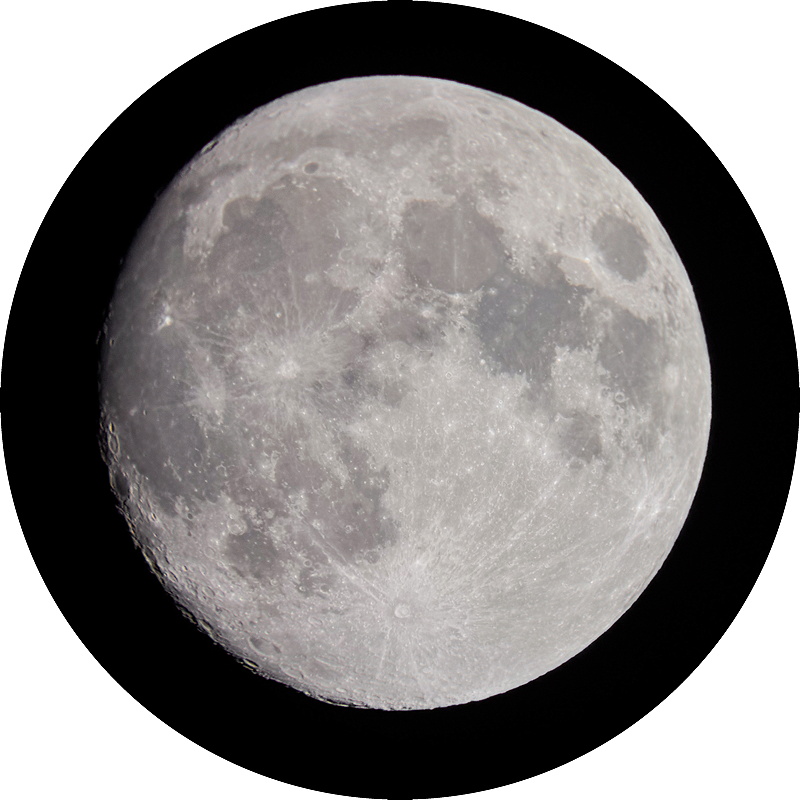
Lastly, I viewed the planet Saturn, 102X.
1951 MST: LX600 OFF.
|
Close: Tuesday, 15 October 2024, 2000 MST Temperature: 70°F |
Session Length: 1h 54m Conditions: Clear |
This may have been my last opportunity to view Comet Tsuchinshan-ATLAS (C/2023 A3) for a few nights. Clouds and possible rain are in the forecasts beginning on Wednesday, 16 October.
Comments are welcome using Email. Please read the Email Etiquette guidance.
Cassiopeia Observatory Home Page
Copyright ©2024 Michael L. Weasner / mweasner@mac.com.
URL = http://www.weasner.com/co/Reports/2024/10/16/index.html
